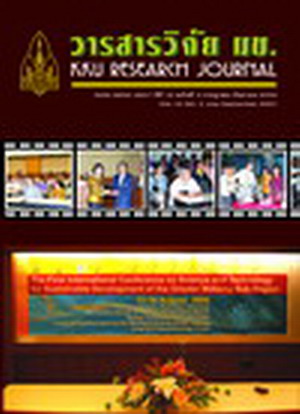Preparation of Porous Biomaterial Structures by a Solvent Casting/Particulate Leaching Technique
Main Article Content
Abstract
The aim of this work was to study and develop the preparation of porous biomaterial structures for biomedical applications. The solvent casting/particulate leaching technique was used to prepare the porous structures. To prepare a porous ε-polycaprolactone (PCL) structure, PCL powder was dissolved in chloroform. Sodium chloride was later mixed into the system. The obtained solution was then cast into a glass mould and air-dried in a fume hood. After drying, salt particles were then leached out using water, leaving a porous PCL structure with high porosity. To prepare a porous hydroxyapatite (HA)/PCL composite structure, HA powder was added into a PCL/acetic acid/sodium chloride system. The porosities of the scaffolds could be conveniently controlled by varying the size and amount of leachable particles. Microstructure study showed that the pores were well distributed throughout the structures. Mechanical testing was undertaken and showed that the tensile strength of the porous HA/PCL structure was less than that of the porous PCL structure. From contact angle study, it was clearly seen that the HA/PCL sample was more hydrophilic than the PCL sample, and thus favoured cell adhesion and proliferation.


